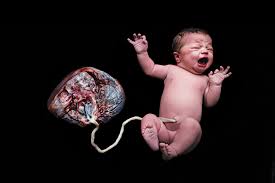TOP LINE:
A groundbreaking study presented at the 2024 meeting of the Society for Reproductive Investigation reveals that changes in retinal blood vessels could serve as early indicators of preeclampsia, a potentially life-threatening pregnancy complication.
METHODOLOGY:
Preeclampsia, a leading cause of maternal mortality, often manifests with ocular vascular alterations, leading to symptoms like blurred vision. Researchers conducted a comprehensive analysis involving 300 pregnant women, utilizing an artificial intelligence framework known as Deep Vascular Topology Network (DVT-Net) to discern retinal changes associated with preeclampsia.
Moreover, a subgroup comprising 31 women with severe preeclampsia was examined postpartum to assess vessel caliber and tortuosity.
TAKEAWAY:
DVT-Net demonstrated a remarkable accuracy level of 0.813 (95% CI, 0.76-0.91) in predicting preeclampsia during the first and second trimesters. Notably, there was no significant discrepancy in retinal vessel caliber between women with severe preeclampsia and a control group of 35 unaffected women.
However, postpartum analysis revealed that women with severe preeclampsia exhibited elevated levels of retinal artery tortuosity (median, 2; range, 1-3.5), compared to the control group (median, 1; range, 1-4).
IN PRACTICE:
The study underscores the potential of infero-temporal retinal artery tortuosity as an imaging marker for severe preeclampsia during the postpartum period. These findings highlight the utility of AI-driven retinal analysis in identifying and predicting pregnancy-related disorders, offering valuable insights for clinical practice.
SOURCE:
The study was led by Srilaxmi Bearelly, MD, an associate professor of ophthalmology at Columbia University Irving Medical Center in New York City.
LIMITATIONS:
The study authors report no limitations, suggesting robustness in their findings.
DISCLOSURES:
The authors disclose no conflicts of interest or financial disclosures associated with this research, ensuring transparency and impartiality in their study.












